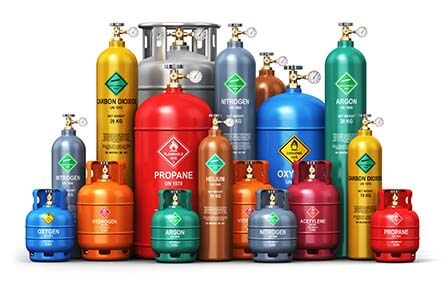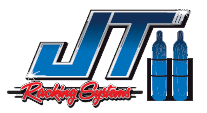 Gas cylinder safety is paramount in every situation. The cylinders are heavy while the gas inside is held under high pressure, meaning there are various risks involved when handling gas cylinders, so its always important to follow the necessary safety procedures.
Gas cylinder safety is paramount in every situation. The cylinders are heavy while the gas inside is held under high pressure, meaning there are various risks involved when handling gas cylinders, so its always important to follow the necessary safety procedures.
A lack of proper safety procedures when using gas cylinders could have serious consequences. From causing significant damage to possibly injuring or even killing someone, gas cylinders must be handled carefully and properly to avoid such risks.
Here are 4 procedures to follow to ensure gas cylinder safety:
1. Store Properly
While gas cylinder storage requirements vary depending on the cylinder and gas, most follow uniform safety procedures to ensure no problems during storage. For instance, it’s widely known that gas cylinders should be stored away from direct sunlight, and they should also be stored away from any potential sources of sparks and flames.
They should never be stored above the directed temperature, which is typically around 125F, while all storage locations must be ventilated. Other important storage safety procedures include avoiding slipping hazards, appropriate lighting, and never leaving obstructions in the event of an emergency.
2. Secure Cylinders and Keep Them Standing
There are cylinders that are okay to store sideways, but this doesn’t mean they should be, as it’s always safer to store them vertically. This is because leaks often occur through valves when stored sideways, creating a possible fire hazard not to mention ruining the gas.
Another important safety procedure is to secure the gas cylinders firmly in place in heavy duty gas cylinder racks. This is because they may fall over and cause injury, with the cylinders being much heavier than most assume. Not only that, but a cylinder could damage other cylinders, nearby machinery, or even roll into somewhere it shouldn’t be and create a huge hazard.
3. Always Check Cylinders Before Handling
Most personnel tasked with handling gas cylinders know the importance of inspection before handling, but it should still be reinforced. By checking for leaks or any problems around the vales or cylinder, accidents are easier to avoid.
Begin with a visual inspection, looking for obvious signs of damage to the cylinder and valves. Also, make sure there are clear descriptions on each cylinder to know what the contents are – avoid handling them if they aren’t labelled properly as you don’t know what you are dealing with.
There should never be contaminants coming out of the valve or regulator, with dirt, grease or oil, being a sign of damage.
4. Handle with Care
Never drag cylinders across the ground – this causes damage to the cylinder that could be seriously dangerous. They should always be transported using an appropriate device (e.g. dolly or cart) and never dropped, dragged, or thrown.
When dispensing the gas from a cylinder you need to wear appropriate safety clothing, including protective gloves and footwear to reduce chances of injury. Never open the valve too quickly either, as this may damage the regulator, and if the valve appears damaged avoid opening it altogether.
JT Racking Systems is dedicated to supplying our customers with the highest quality Cylinder Storage Racks available. Our Cylinder Storage Racks are fully made in America with US Steel and Chain, and are Welded and Powder Coated at our facility in Southern California. Regularly used in hospitals, universities, or laboratory gas storage rooms, our cylinder racks can be utilized wherever securing of cylinders is needed. We ship anywhere in the United States from our Los Angeles area facility, at the best prices on the market since you are buying direct from the manufacturer.
